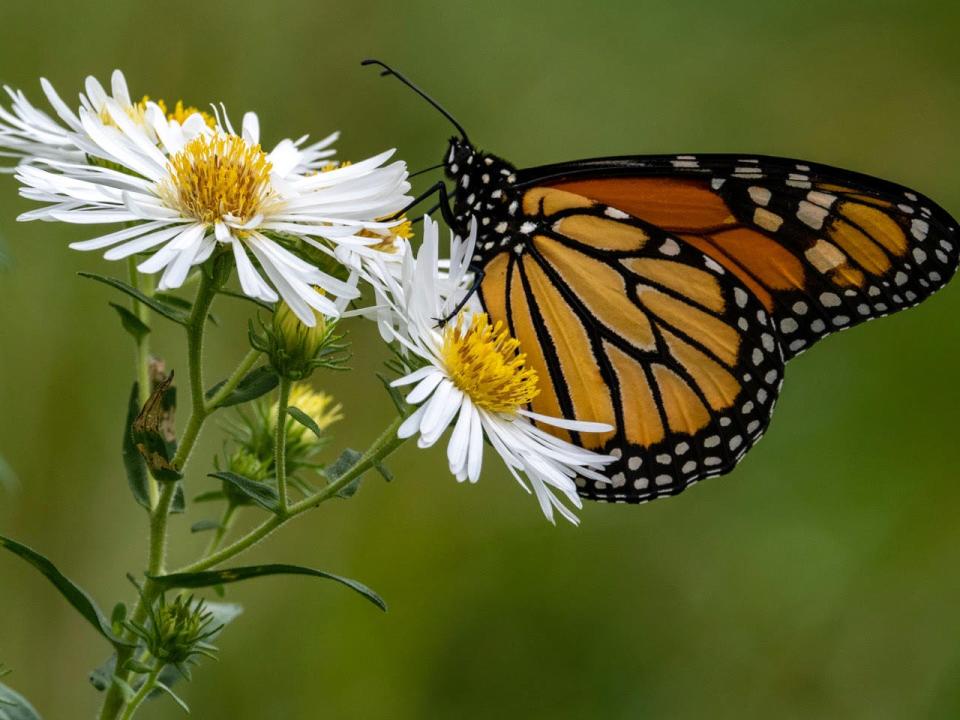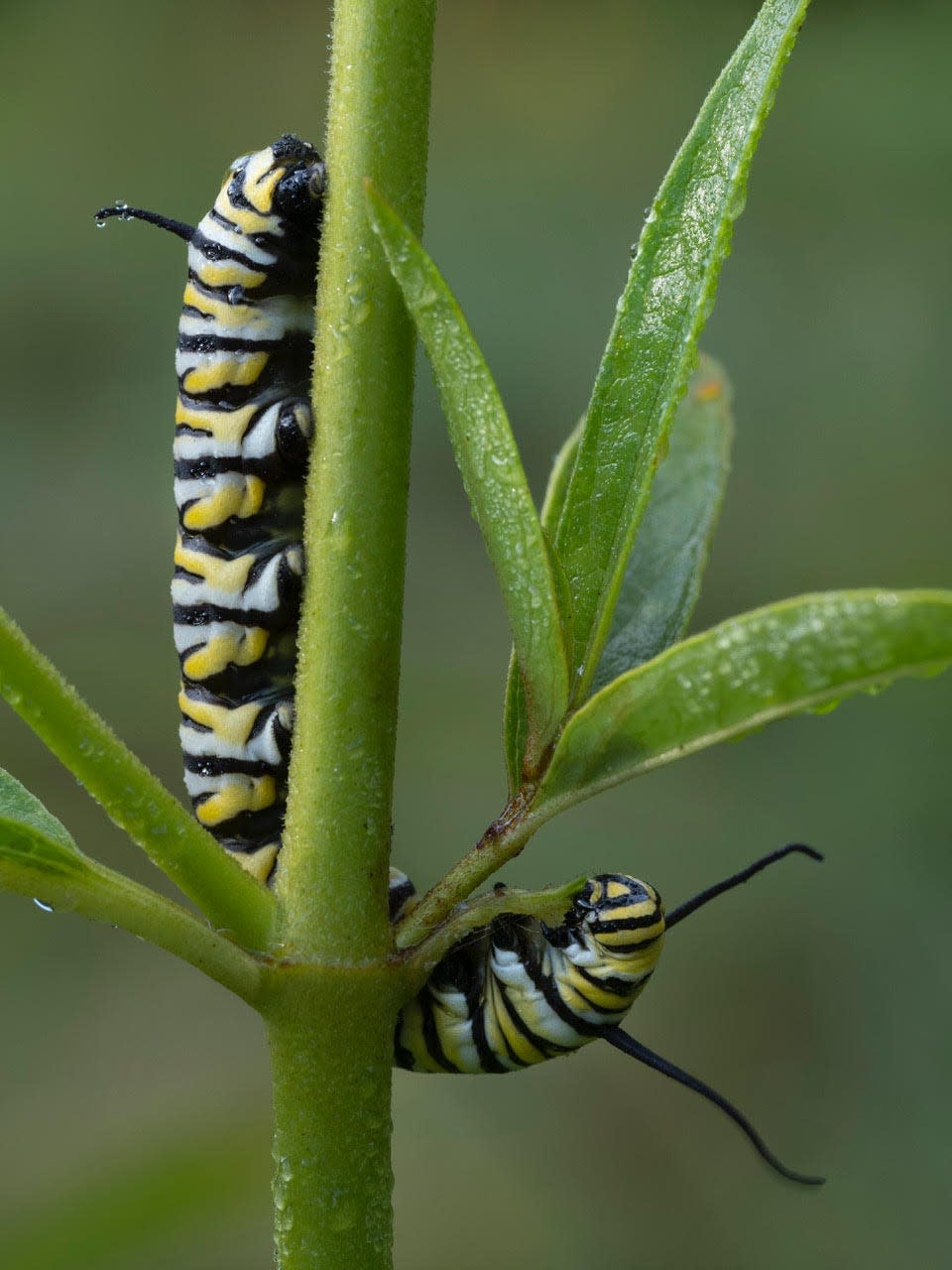What you can do to help save the monarch butterfly. Yes, it is endangered.
Just this past month the International Union for Conservation of Nature placed the migratory monarch butterfly on its Red List of Endangered Species. This has been a long time coming. Monarchs are the poster child for the insect world. Large and charismatic, everyone loves them and are much more likely to want to help them out than, for example, our locally endangered burying beetle or ringed boghaunter.

Monarch butterflies have been in decline for a while, so why list them now? In many places, their population is rapidly collapsing. The western population, for example, is at the greatest risk of extinction, “having declined by an estimated 99.9%, from as many as 10 million to 1,914 butterflies between the 1980s and 2021. The larger eastern population also shrank by 84% from 1996 to 2014. Concern remains as to whether enough butterflies survive to maintain the populations and prevent extinction,” according to a recent IUCN press release. This is what it means to be endangered, It’s the intensive care unit of conservation efforts. These animals are teetering on the brink of extinction.
More: Nature News: Kingfishers a harbinger of the halcyon days of summer
What is causing this decline? A variety of human practices in their overwintering grounds and along their migratory pathways. There's the loss of their winter sheltering areas in Mexico and California due to logging, both legal and illegal, to open up land for agriculture and urban development. The use of pesticides and herbicides for industrial agriculture along their migratory pathways kills a wide range of insects and birds, as well as the milkweed plants that are a necessary part of the monarch life cycle.
Climate change is the most recent, and biggest, threat. The reason the western populations are decreasing at such a catastrophic rate is largely due to the increased frequency of wildfires, drought and extreme temperatures in the west. In addition, throughout Central and North America, “the warmer temperatures and earlier springs along monarch migratory routes could create a mismatch in time or space between monarch breeding cycles along their northward migration (April to August) and the growth and survival of milkweed plants eaten by monarch caterpillars," according to seagrant.umaine.edu.

The environmental threats monarchs face seems daunting. Back in 2014, I was waking up to the importance of milkweed and the lack of it in my backyard. This was before the impact of climate change was fully realized. I wrote “One might argue that monarch butterflies are a tenuous species, relying upon a fragile network of unlikely coincidences; perfect conditions at every stage of their migration, perfect weather in the south, perfect timing so that the one plant they need to succeed, milkweed, can flourish. Perhaps they are destined for an early extinction, even without human encroachment on their migratory routes. Or, perhaps, they are perfectly adapted to their world.
"I, personally, don’t want to be a part of their demise. I’m going to nurture those two milkweed plants near the chicken coop, and am going to try to talk my neighbor into not mowing the part of their field where the milkweed grows, and hope that some monarchs make it north this summer and find a safe haven in my backyard.”
More: 'Go out and look': Ebony jewelwings arrive with their delicate beauty once more
I am still optimistic that we can turn things around for monarchs (and other wildlife). Since then, we’ve cultivated a larger patch of native common milkweed (Asclepias syriaca) and added two more species native to the Northeast swamp milkweed (Asclepias incarnata) and orange milkweed (Asclepias tuberosa). We are also planting as many native wildflowers as possible, Adult monarch butterflies feed on a variety of wildflowers, not just milkweed. The native part is key. The non-native tropical milkweed (Asclepias curassavica) is lethal to monarch butterflies in a variety of ways. It carries disease, disrupts migration behavior, and in a warming climate becomes more toxic to the caterpillars! Monarch caterpillars feed exclusively on milkweed whose sap is somewhat toxic. This toxin is retained by the caterpillars and is what makes both the caterpillars and adults distasteful to predators (hence the striking warning coloration of both). As it gets warmer, the non-native tropical milkweed increases production of these toxins, in contrast, our native milkweeds don’t. This is just one example of the many reasons planting native species is usually a safer bet than non-native species.
The red-listing of monarch butterflies is just one more call to action for all humans to work toward a more sustainable future. Everything that we do right now to help monarch butterflies recover, from planting native wildflowers, to choosing organically-grown produce, to reducing our carbon footprints will benefit not just monarch butterflies, but all life on planet Earth.

Susan Pike, a researcher and an environmental sciences and biology teacher at Dover High School, welcomes your ideas for future column topics. She is looking for readers to send her the signs of spring they're noticing so she can document them on her website pikes-hikes.com. Send your photos and observations to spike3116@gmail.com. Read more of her Nature News columns online at Seacoastonline.com and pikes-hikes.com, and follow her on Instagram @pikeshikes.
This article originally appeared on Portsmouth Herald: How to save the endangered monarch butterfly: Nature News

